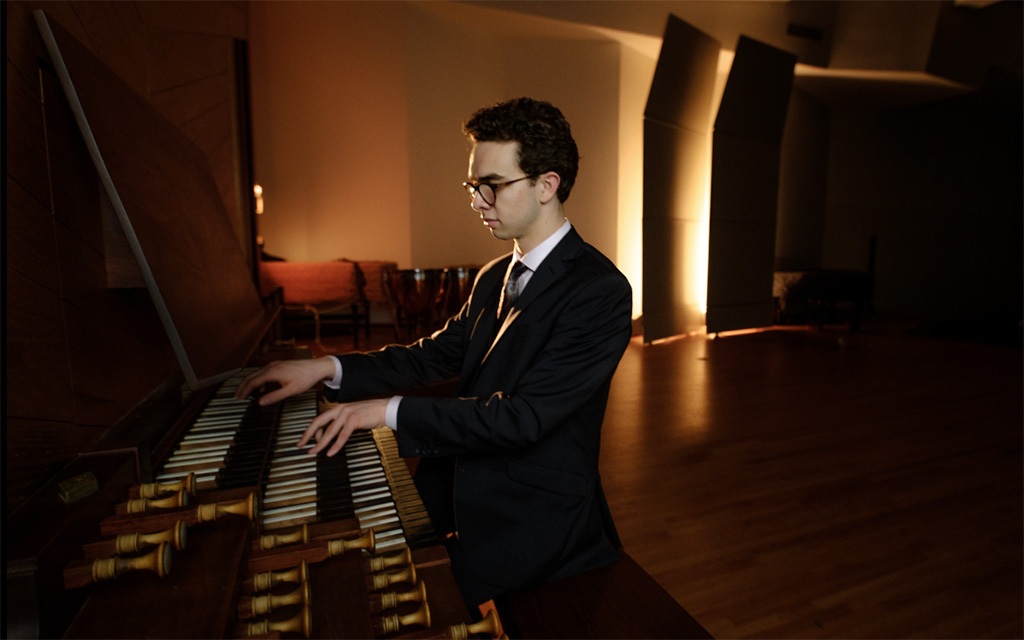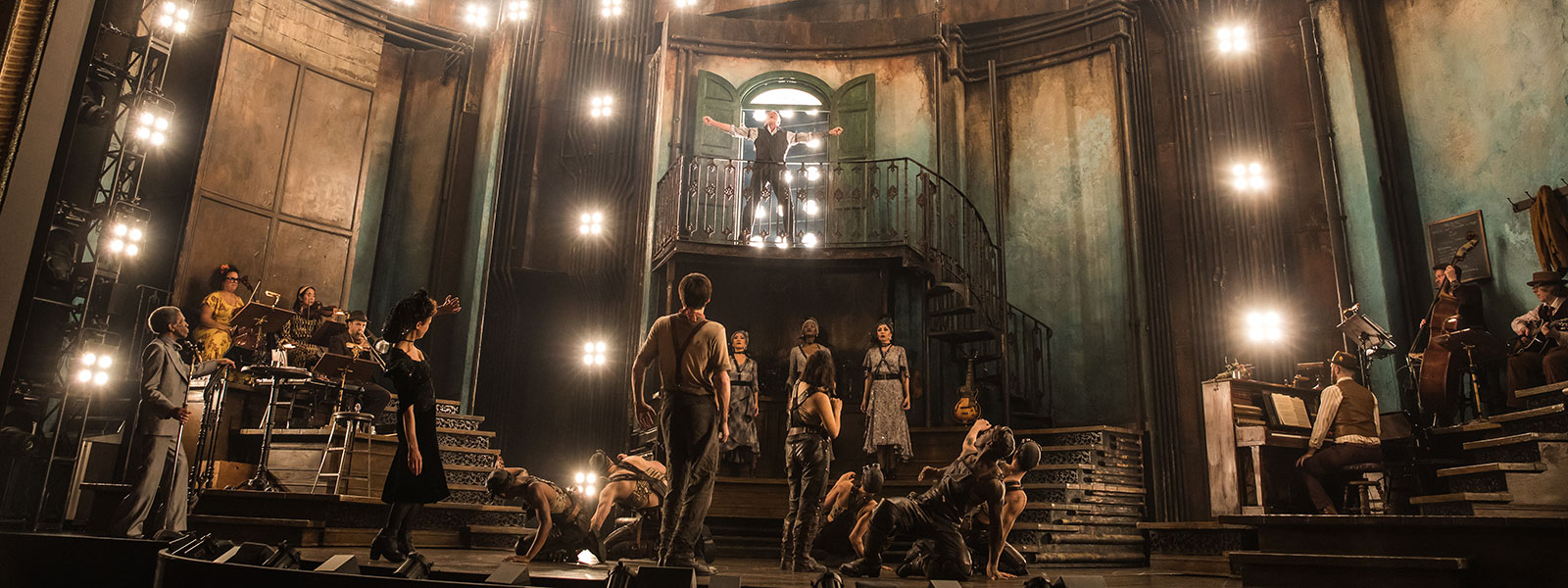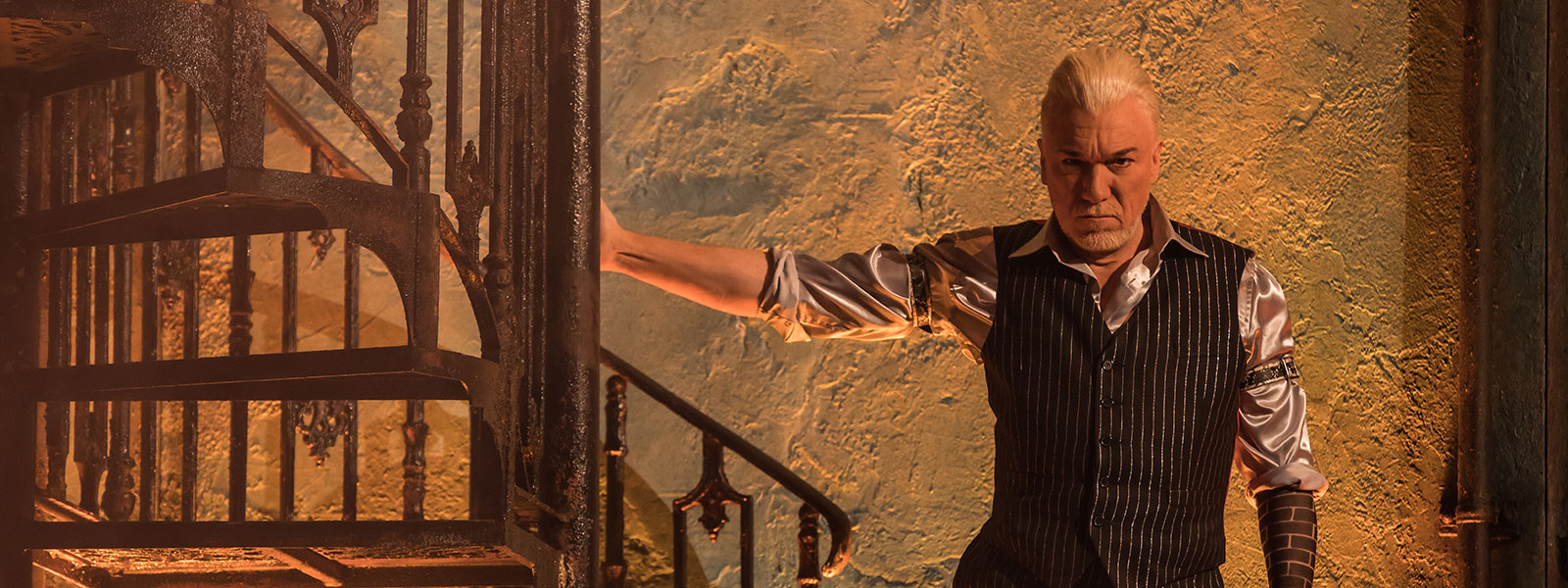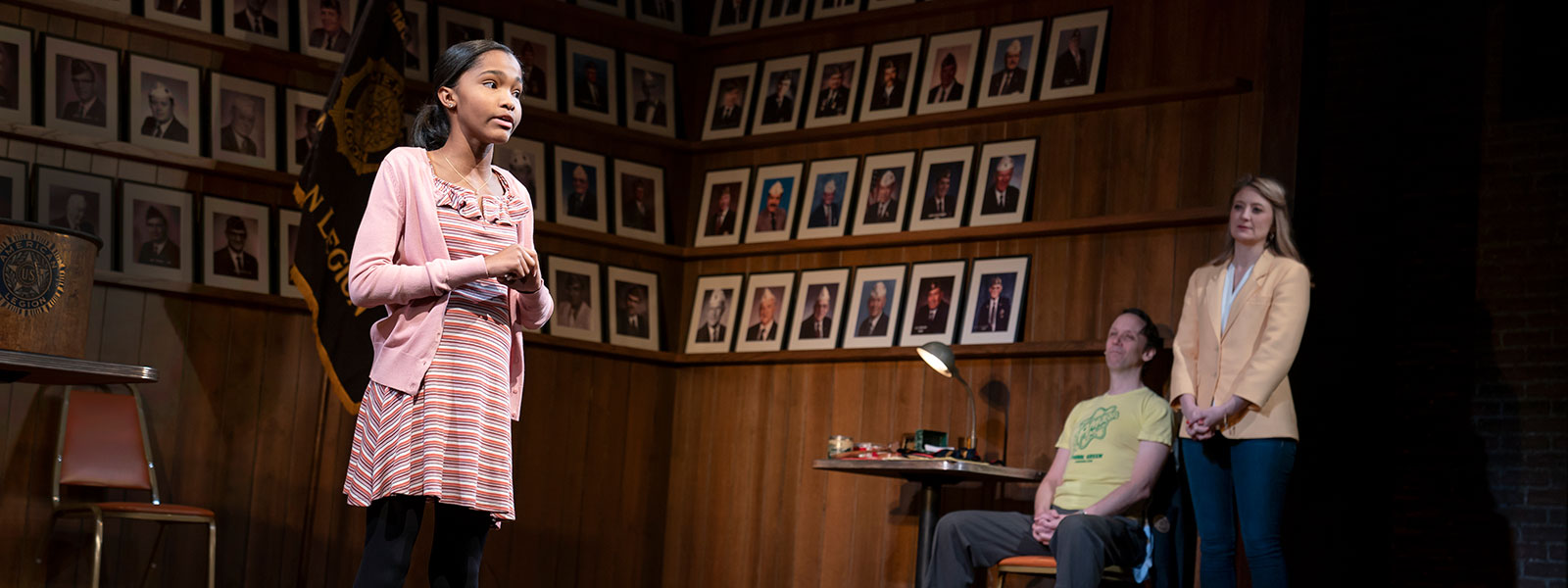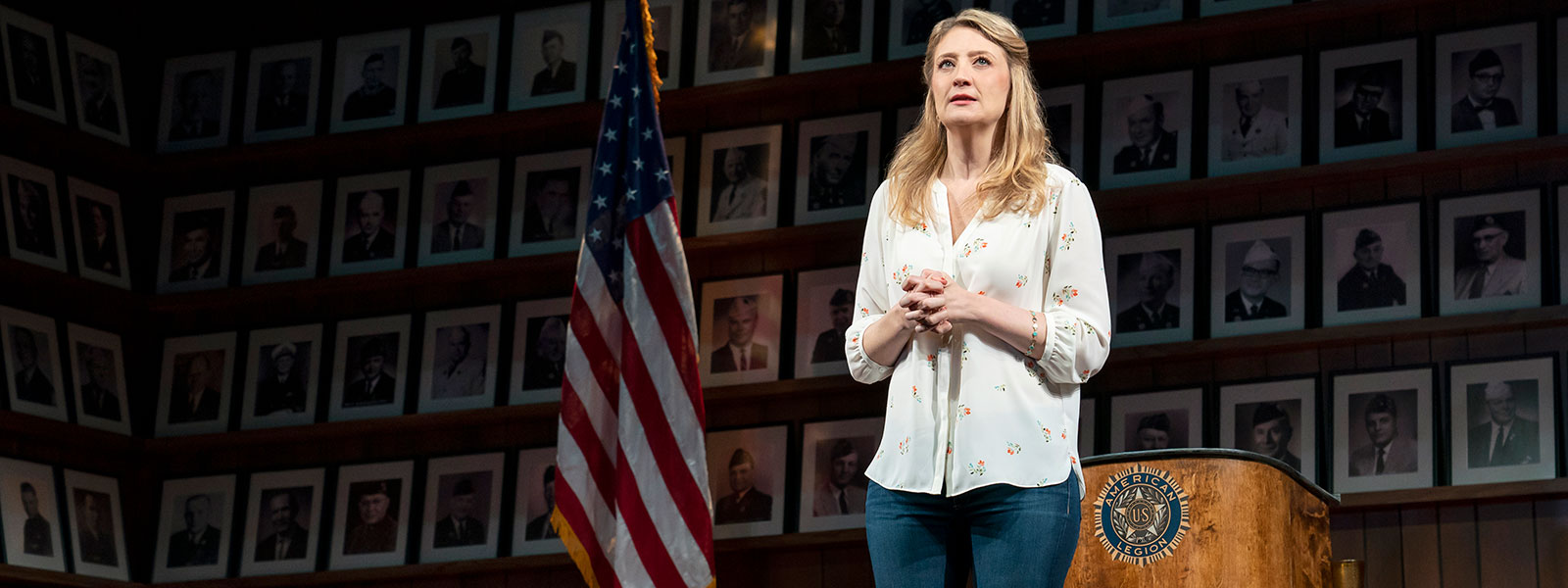Rachel Hauck
The views and opinions expressed by speakers and presenters in connection with Art Restart are their own, and not an endorsement by the Thomas S. Kenan Institute for the Arts and the UNC School of the Arts. This interview has been edited for length and clarity.
2019 was a banner year for set designer Rachel Hauck. Two of her designs were on Broadway in acclaimed productions: the Tony-nominated play “What the Constitution to Me” and the musical “Hadestown,” which not only won the Tony for Best Musical but also earned Rachel her first Tony for scenic design.
The recognition came after almost three decades of consistent work in the theater, starting in her hometown of Los Angeles and then in regional theaters all over the country, from the renowned Oregon Shakespeare Festival, where she worked several summers, to the O’Neill National Playwrights Conference in Connecticut, where she served as the resident set designer for 10 years.
When she and her partner and frequent collaborator, director Lisa Peterson, moved from Los Angeles to New York, Rachel quickly established herself as one of the most in-demand designers for the city’s most vibrant Off-Broadway theaters, and in 2016 she received an Obie Award for sustained excellence of set design.
In this interview with Pier Carlo Talenti and Rob Kramer, Rachel describes the full impact of the pandemic shutdown on her own career and the theatrical ecosystem as a whole. She also enumerates the systemic changes that must take place in the field to ensure that gifted designers of all kinds can enjoy sustainable and lasting careers.
Choose a question below to start exploring the interview:
- When the pandemic hit, did you have a number of projects that were just put on hold immediately?
- What’s been the mental transition you’ve experienced going from working, I imagine, incredibly long hours to suddenly stopping?
- You and your partner have been working on a project recently. Could you describe it to us?
- In terms of what the future might look like, did 2020 give you a clear sense of what things you’d like to see change in your field, things you’d want to reinvent or fix?
- Another success you had in 2019 was helping spearhead the first collectively bargained agreement ever for designers working off-Broadway. Can you summarize what you accomplished?
- What did you learn about yourself as you stepped into these positions of leadership?
- Do you get a sense of, without naming any names, the types of institutions that will probably come out of this with good strategies and survive?
- If you had a magic wand and you could pull together the right people, the right circumstances, what would be a healthy place where you’d like to see the artistic and design world start once we can get going again?
- What advice might you give emerging designers, as you said, the students getting ready to come out of design school or art school soon, whether it’s this year or in the next two or three years?
Pier Carlo Talenti: When the pandemic hit, did you have a number of projects that were just put on hold immediately?
Rachel Hauck: Oh, completely. Yeah. I had an awful lot of projects that were completely stopped, and the calls came one after another in a totally heartbreaking way. Then some of them were optimistically rescheduled and canceled again. Even though we expected that that might happen, when you got the email telling you that there was going to be a phone call, there was no question about what it was. It continued to be hard every single time.
I was seeing plays every night, and the last thing I saw was “Cambodian Rock Band.” Then I went over to the place across the street on 42nd Street where everybody in the theater world goes for a drink after a show, and there were six people in it. It was unbelievable. I called my friend [“Hadestown” producer] Mara Isaacs, who happened to be in town. We went over to Mara’s and drank a bottle of champagne and said, “OK, here we go.”
I flew to California for two days to see my mom, which turned into two weeks. Then I came home and didn’t see my studio again for three months. When I went downtown and walked into that studio, it was as we’d left it. My assistant had worked for a couple of days past me. She’d left a light on, because she’d left in a hurry just before they locked down the city. I walked into the studio and it was heartbreaking because it was like a mausoleum of dead plays. There was an enormous pile of mail and all the models were still out and the plant was dead. It was truly shocking. It was truly shocking.
Rob Kramer: What’s been the mental transition you’ve experienced going from working, I imagine, incredibly long hours to suddenly stopping?
Rachel: It was crushing and shocking. I don’t think any of us realized at how high a level we were functioning until it stopped. To do productions at that scale and in multiple venues, and we were beginning to think about the tour at that point, and one show was already on tour … . I think I was in genuine shock for a very long time, a month, six weeks. I did a couple of podcasts early on in which people were like, “Well, how are you doing?” I was like, “Not well.” Just in shock.
To have had such a game-changing year and then to suddenly come to a stop, it is shocking personally and yet it is impossible to not be aware of how lucky we were.
To have had such a game-changing year and then to suddenly come to a stop, it is shocking personally and yet it is impossible to not be aware of how lucky we were. My mother was OK, Lisa and I were OK. We had our health, we had a place to be, we were financially ... . If I had not happened to have the year I had in 2019, I would have been in enormous trouble. I felt very, very aware of that as well and honestly of how many of our peers and my friends are not going to come out of this well.
Pier Carlo: I know you and your partner have been working on a project recently. Could you describe it to us?
Rachel: We’ve done a couple of things. Lisa’s incredibly nimble and fertile brain just continues to make things, and she’s made a number of projects in this pandemic that have been really remarkable. A couple of them have had a little space for me, which has been fun, most of them being visual. Most of the art that’s been made during this pandemic has not required set and costume designers and only occasionally a lighting designer. The sound designers have been very busy, which is great.
She did two that we were a part of. One was a play called “Fuck 7th Grade,” which is for Jill Sobule’s musical that we were working on for City Theatre in Pittsburgh. They decided to find a way to do a version of this as a drive-in, outdoor in a parking lot.
There wasn’t much scenery involved. It was basically a concert outside with a video element, and then we recorded it to be a broadcast option for their audience. It was a blast and very confusing to be in a different town that I didn’t know, to be in artist housing, to hang out with a great band, which then became a pod. Then we were suddenly like that thing that happens when you’re hanging out with incredibly talented people after rehearsal every day, especially musicians. There’s just music all the time and cooking all the time. There wasn’t much for me to do artistically, but it was rewarding to my soul to be there with those incredible people.
Then the project that we’re working on now, which is where my head was until we started this phone call, is almost a film project for Berkeley Rep. Lisa and David Bucknam wrote a musical. When they were wee children, they wrote an adaption of Virginia Woolf’s “The Waves.” David is no longer with us, but she has come back to this piece with Adam Gwon. We have been working on it. The material itself really speaks to this time in quarantine.
We’ve started making a project in six episodes called movements, because it’s a music-based thing, six movements called “The Waves in Quarantine,” which is a really slippery conversation. She’s written some beautiful new text. It’s actors in dialogue with their characters and the musical and each other during this time, filmed and then cut into six elements. It’s been fantastically complicated, an extraordinary group of people. They are recording this stunning music in their closets [she laughs] with the remarkable [orchestrator and music director] Mary-Mitchell Campbell on the other end of a microphone.
At least the making of this has been incredibly rewarding because we’ve got just enough technology to get ourselves in trouble and we can see the cameras, which are being shipped from actor to actor to actor who are shooting his thing one person at a time. We can see and set up their shots and adjust their lighting and adjust the set dressing and take a look at the costumes — of course everything is in their own home and with their own stuff — and shoot these sections as if it were a film. Half of the crew are theater people and half of our crew are genuinely brilliant film people and then there’s the musical theater people.
I don’t know what it’s going to turn out to be, but the making of it has been remarkable because we’re learning something new and we’re, again, hanging around with such incredible talent. I mean, my God, to hear those people sing, it’ll just break your heart.
Rob: I think that’s what so beautiful about artists in general — you’re talking about it here — is how you find ways to do your craft, even through this. It might look different and you might learn new ways to create, but the drive and desire are always there.
In terms of what the future might look like, did 2020 give you a clear sense of what things you’d like to see change in your field, things you’d want to reinvent or fix?
Rachel: I mean, sure. Most of my energy has gone to working on all of the racial-justice stuff that has got to change within our field. I’ve been extraordinarily fortunate to be in conversation with a group called Design Action, which is about particularly looking at all of these issues within the design community. Being a part of keeping that conversation going and opening doors and trying to just change how this business runs in order to make it a more equitable field has been a massive part of my life for the last six months.
Pier Carlo: When you say, “changing the way this business is run to make it more equitable,” what are some of the basic things that need to be reexamined and changed?
Rachel: Well, there are so many, and they have been so graciously laid out for us by #WeSeeYou White American Theater, but within our field, I mean, there’s an enormous amount of expectation. Design has for a long time been considered ... back in the day, it was a gentleman’s profession. The fees are very low, the hours are very long. The assumption is that we would just make it work, and of course, the number of artists that excludes is incredible. I don’t know that anybody had considered how many people just could not be a part of the conversation and how exclusive the storytelling was, based on the fact that people had to be able to be completely financially independent before they could even consider this as a field. Until you get a really lucky break.
I remember the first day I got a really great off-Broadway job and I thought, “Oh, here it is at last. I’m going to start to be a little more solvent.” Then I saw the fee, and I was furious and heartbroken at the same time, because it just is 100% untenable. I’m very fortunate that there’s never been a question that one way or another I would have a roof over my head. But it has been a charitable job. I mean, literally, my profit was deep in the poverty level until about three or four years ago, which is not what you would think if you looked at the work I’ve been lucky enough to do.
How we both take care in the way that we tell stories and make it possible for more people to tell these stories, it’s a big conversation.
There are some radical imbalances about what is expected and what we have accommodated for years and years and years. There’s an awful lot there. But in terms of equity, we’ve got to get more doors open for more people. I mean, if you go backstage at any theater on Broadway, that’s not equal representation on either side of the footlights. How we both take care in the way that we tell stories and make it possible for more people to tell these stories, it’s a big conversation.
Rob: Another success you had in 2019 was helping spearhead the first collectively bargained agreement ever for designers working off-Broadway.
Rachel: Yes!
Rob: Can you summarize what you accomplished?
Rachel: Beginning to stare down this fundamental belief that this is just part of the business, this is just what it takes, and starting to take a step back in this time and say, “It’s just unacceptable.” We are lucky to be artists, but we need to be valued as artists. Helping people understand what the actual toll is on the people they have come to expect to be part of their productions. I think that whole layer of conversation, which has come immediately out of being a part of those negotiations, has been incredibly affecting as we move forward here.
Pier Carlo: Can you tell us, other than getting essentially a raise or raising the amount of money that you and your fellow designers would be paid off-Broadway, what is major concession that you got that most of us would not have thought of or would not know you needed as a designer working off-Broadway?
Rachel: It’s mostly financial. It has to do with how much equipment we have to have to do the jobs and the fact that we’re all expected to own programs that cost an enormous amount of money every year: the basic drafting programs, the basic sound programs, the equipment that the sound designers are expected to own and bring with them to tech in order to do that work. Stuff like that, where it’s just like this is all part of the financial issue that we’re struggling against.
Also, there’s a certain amount of — and I would say that we had mixed success with this — acknowledging that the designers are a major part of the production. For example, the requirement to put our names on the mailers. We did not succeed at that, so you will see the directors and the actors credited, but the designers’ contributions are at the discretion of the theater and whether or not they include us in their websites and our bios here and there. Things like that, where it’s just a basic way of representing the value that designers bring to the —
Pier Carlo: Even though the photo they’ll use in the mailer will undoubtedly contain your designs.
Rachel: Exactly. Exactly. It is not to say that the artistic directors don’t value our contribution, because they do. They 100% recognize the contribution that the design elements bring to the production. It’s fascinating. It’s like a cultural shift.
I mean, I cannot really describe how generous the conversation was — of course it was a negotiation, and all negotiations have tricky moments — but the conversation between the producers and the designers was really generous for the most part. We didn’t get far enough. We didn’t get a major financial ... we didn’t see a sea change in how we’re being paid, but we saw promise.
Pier Carlo: What did you learn about yourself as you stepped into these positions of leadership?
Rachel: It is amazing to me — again, these things that I hadn’t named for myself until very recently — it’s extraordinary that considering the different rooms that designers are in, the way they move through the world, what they’re looking at globally in terms of their own work and the number of theaters they’re in, I just find it remarkable that more designers are not in genuine leadership positions. We are really coming in and out, project to project.
Rob: You’ve seen so many institutions and worked in so many settings, small, large, non-profit, for-profit. Looking at the other side of the street, do you get a sense of, without naming any names, the types of institutions that will probably come out of this with good strategies and survive? What is it that they’re seeing or have the abilities to do?
Rachel: I don’t know who’s going to make it through this. I mean, I genuinely don’t know. I’m really terrified. I’m terrified we’re going to lose a generation of artists, for sure, who just can’t afford to sustain. The number of people who have moved out of New York, as in giving up their apartments! It’s a huge number of people, and it’s from all levels of theater. Almost everybody in the theater is pretty hand-to-mouth, and so this kind of a hit … who can come back? Who was established enough to come back? All those designers whose careers were about to break. All those students who just came out of school and needed to start to get their toes wet in New York or Chicago.
I’m so nervous about how many artists we’re going to lose — I’m very focused on design right now because of this work I’m doing — in every corner of storytelling. In terms of the institutions, I cannot imagine there are many who are fortunate enough to have an endowment that is going to get them through what is going to turn out to be a two-year closure. I cannot imagine how theater will be getting through this.
Obviously, we are all doing everything we can for every theater that we are closely associated with or have strong relationships with. Not too many people have turned to designers to look for a hand that way in this time, but we’re here [laughing]. I don’t have an answer to the question that’s good. I mean, I just don’t know who is positioned well enough to truly survive this. I expect the more major theaters, the more major off-Broadway houses will make it through in New York, but past that, I don’t actually know.
Rob: If you had a magic wand and you could pull together the right people, the right circumstances, what would be a healthy place where you’d like to see the artistic and design world start once we can get going again?
Rachel: In my fantasy of all fantasies?
Rob: Yes.
I would love for everybody to have a little more time to work on the things they’re excited to work on. I hate to always bring it back to money, but if people could be relieved a little bit of the financial desperation and urgency in order to have more space to work on things, boy, I would love that.
Rachel: I would love for everybody to have a little more time to work on the things they’re excited to work on. I hate to always bring it back to money, but if people could be relieved a little bit of the financial desperation and urgency in order to have more space to work on things, boy, I would love that. I would love that. I would love to not be working on so much stuff at once and to slow it down.
There’s an incredible benefit to having had to slow down, even though it’s been a bit of a manic, crazy time and such an intense full stop, which has really rocked everybody’s world. But to start it back up? It’s so hard for me to answer this question because it’s so hard for me to see forward right now, as we continue to get news and projections about how long it could be.
I’m very lucky to be just beginning work on a project for Baltimore Center Stage called “The Garden,” which will be done, whether or not there’s an audience there. They’re going to build a new production and develop this piece of work. That feels thrilling to me. There’s a bunch of logistics happening around the tour of “Hadestown,” the machine of “Hadestown” as it continues to move on.
But the gold of what could be ahead, the opportunity for people to have a little more breadth and a little more stability so that they can really lean into the conversations … . I don’t know if when we come back there’s going to be a flood of work or if people are going to stand a little caught in the headlights from having been so fully stopped.
I would imagine once I ... I mean, listen, I’m talking to you from my mother’s garage, right? Once I get back to my studio, I don’t know. The building that my studio is in feels different; the neighborhood felt different last time I was there, which was months and months and months ago. It was not a joyful place to be, the way it once was, so it’s very, very hard for me to picture the way forward. I want to paint you the most beautiful optimistic picture of a rosy world ahead, but it’s pretty hard for me to see it at the moment.
Rob: You said something earlier that really struck me, which was we’re potentially losing a generation of artists right now. What advice might you give emerging designers, as you said, the students getting ready to come out of design school or art school soon, whether it’s this year or in the next two or three years?
Rachel: Oh boy. [She laughs.] This is always true in this field: I saw as I moved through the years doing this, that people would fall away from this work in waves, because it’s very hard. It has to be your deepest passion, or it’s just too hard financially. Also the lifestyle. You have to be suited to so many things. I watched people fall off senior year in college, and then when I was 25, a whole wave of people were like, “You know what? This isn’t for me.” Then again at 30 — I mean, it was almost on the fives! — and at 35. Then past 35, it started to be when people wanted to have families, and they were just like, “I can’t do this work when we have families.”
I think my worry for the next generation of people is that they don’t have the opportunity to really lean in and see if they love it and if they want to do it and if they can make a way of it or if that opportunity is going to not come their way for a little while. I mean, my advice to young people in the normal time of life is always to see as much theater as you can and be around as much theater as you can and find your passion and find the group of people with whom you most truly speak as an artist. Find your voice. That’s just hard to do right now.
My belief, my deepest belief is that theater will come back. It is fundamental to who we are to gather and to hear stories. ... I’m just hopeful that the people for whom this is their most true voice will find a way to stay with it until we can get back up on our feet.
My belief, my deepest belief is that theater will come back. It is fundamental to who we are to gather and to hear stories. That thing that happens in a theater when an entire roomful of people starts to have their heartbeat synchronize and they start to respond to a play together as a room, there’s nothing else like it! I’ve never believed theater will disappear, and I don’t believe it now. I’m just hopeful that the people for whom this is their most true voice will find a way to stay with it until we can get back up on our feet. We just don’t know when that’s going to be.
February 22, 2021





